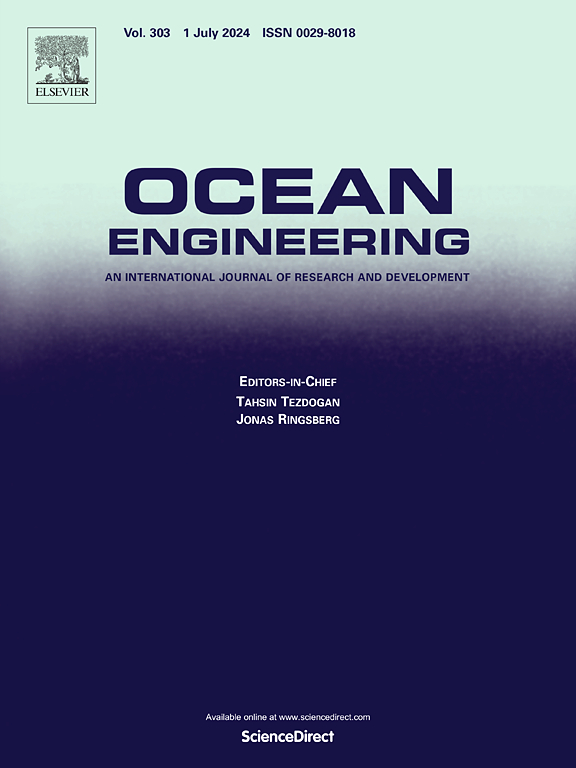Synchronous inversion of bathymetry and wave height using wave textures and sun glint signals
IF 4.6
2区 工程技术
Q1 ENGINEERING, CIVIL
引用次数: 0
Abstract
Waves and sun glints in optical remote sensing images present opportunities for inverting water depth and wave height, rather than being considered as unwanted noise. This study focuses on the simultaneous inversion of water depth and wave height from satellite images, without the use of auxiliary data, aiming to improve data utilization efficiency. Firstly, ocean dynamic parameters, such as wavelength, are derived using wave textures and the imaging delay mechanism. Then, the parameters derived in the previous step are used in the linear dispersion relation to give support for water depth-related research. Simultaneously, wave height inversion is achieved by integrating sea surface roughness obtained from sun glints with the wavelength utilized in the water depth inversion process. Water depth around Oahu Island and Beidao Island is derived, and wave heights near multiple buoy stations worldwide are retrieved. The results indicate that: 1) based on the wave textures, the MAE (Mean Absolute Error) of the depth inversion experiments for Beidao and Oahu Islands are 3.08 m and 2.06 m, respectively; the MRE (Mean Relative Error) are 51.4 % and 30.9 %, respectively; 2) the MRE of the wave height inversion results is 32.4 %, and the MAE is 0.35 m. Thus, water depth and wave height can be obtained using wave and glint information.
求助全文
约1分钟内获得全文
求助全文
来源期刊

Ocean Engineering
工程技术-工程:大洋
CiteScore
7.30
自引率
34.00%
发文量
2379
审稿时长
8.1 months
期刊介绍:
Ocean Engineering provides a medium for the publication of original research and development work in the field of ocean engineering. Ocean Engineering seeks papers in the following topics.
 求助内容:
求助内容: 应助结果提醒方式:
应助结果提醒方式:


